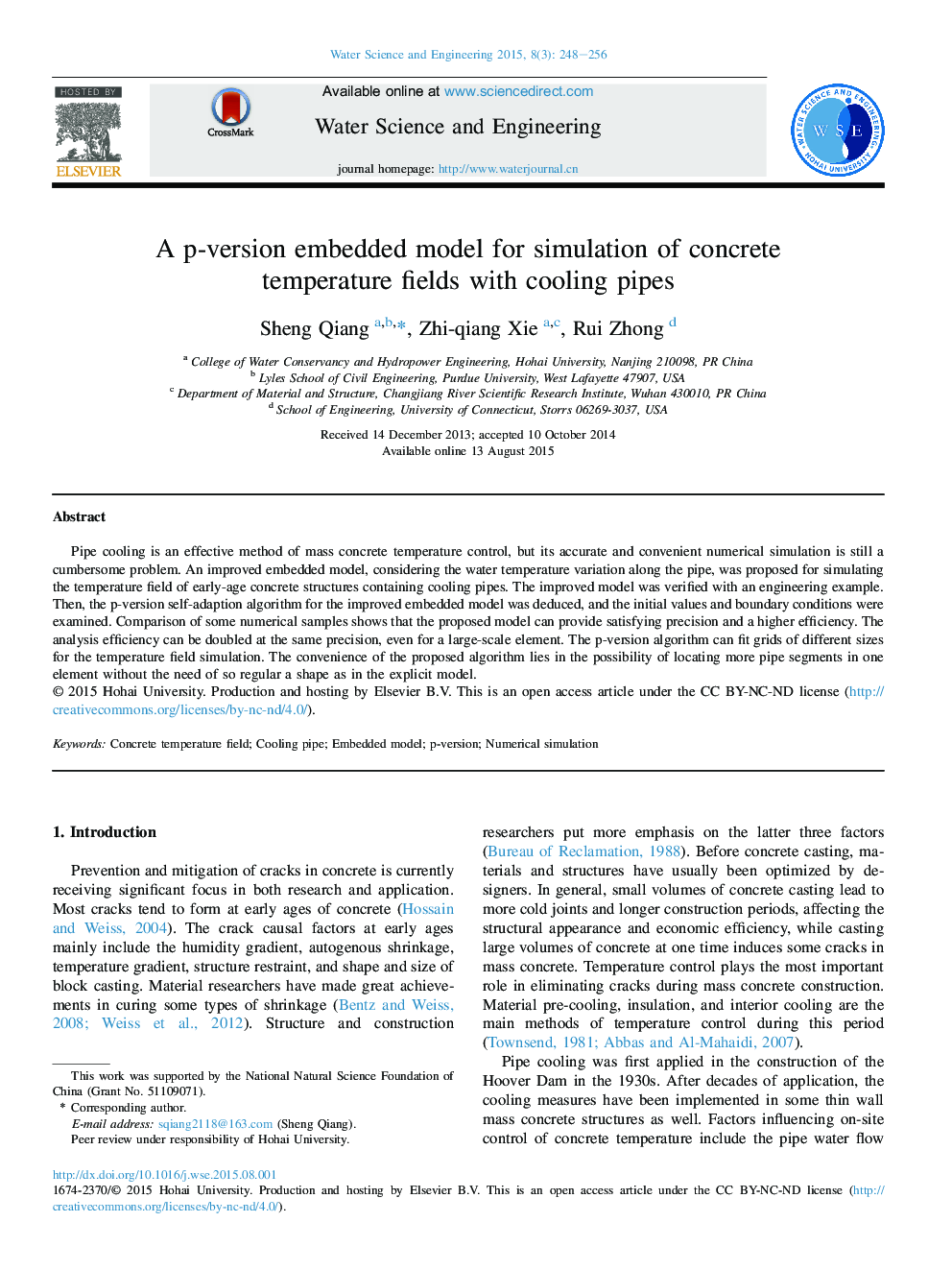| Article ID | Journal | Published Year | Pages | File Type |
|---|---|---|---|---|
| 313386 | Water Science and Engineering | 2015 | 9 Pages |
Pipe cooling is an effective method of mass concrete temperature control, but its accurate and convenient numerical simulation is still a cumbersome problem. An improved embedded model, considering the water temperature variation along the pipe, was proposed for simulating the temperature field of early-age concrete structures containing cooling pipes. The improved model was verified with an engineering example. Then, the p-version self-adaption algorithm for the improved embedded model was deduced, and the initial values and boundary conditions were examined. Comparison of some numerical samples shows that the proposed model can provide satisfying precision and a higher efficiency. The analysis efficiency can be doubled at the same precision, even for a large-scale element. The p-version algorithm can fit grids of different sizes for the temperature field simulation. The convenience of the proposed algorithm lies in the possibility of locating more pipe segments in one element without the need of so regular a shape as in the explicit model.
